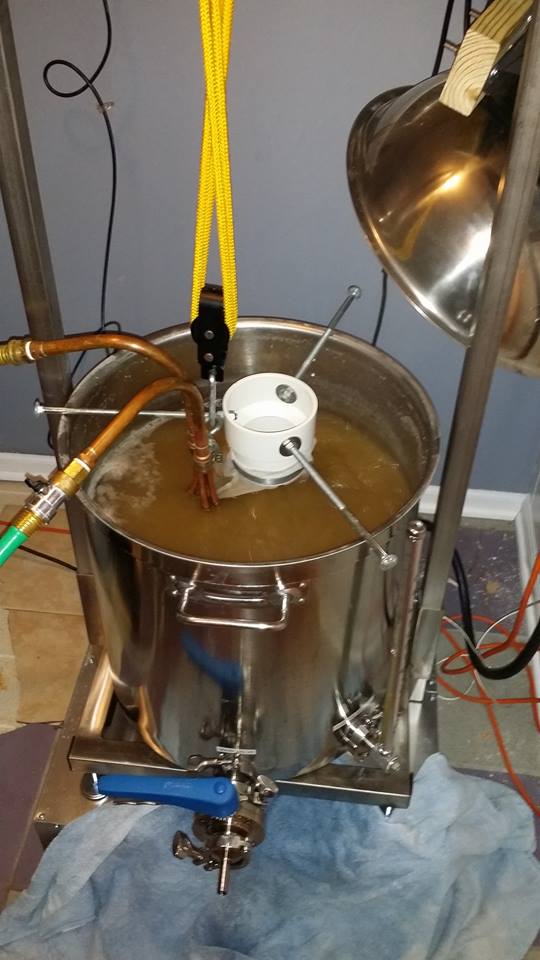It's been a long time coming, but I finally brewed my 1st batch (NB Caribou Slobber) in my CBS kettle last night! I have the 10G kettle w/no stand. I have my own controller from my previous RIMS system, which I recycled. Overall, I feel things went well. I did have a few challenges, which I hope to work through.
1) Like many here, I was not able to maintain a "suspended" mash. However, I was able to throttle the flow to just the correct amount so that I was recirculating the same amount that I was sucking out the bottom. To make this easier, I used a clip on the sight gauge. If the water kept dropping, I'd throttle back. If the level climbed, I opened it up a bit. Now, if you don't have a sight gauge, that technique might be difficult.
2) It didn't dawn on me until the mash was over to check the temp of the actual mash bed. I wanted a temp of 153, and that's what I set on the PID. Unfortunately, the mash bed in the basket was only 149 at the end of my 60 minutes. Sounds like I'm going to have a drier beer than intended. That aside, it makes sense now that I think about it. The element is on the bottom, as is the temp probe. I've got 153 degree water on the bottom, which I suck out via the pump, where it loses a few degrees moving through the hoses/pump, and likely returned to the top well below my intended mash temp. :-( Doh!! Something I'm going to spend a bit more time evaluating and experimenting during my next batch to make sure the mash is at the right temp and not rely on the PID temp.
3) Not really a problem, but an observation. It's also not something most people will need to deal with since they have the stand. Man, that basket with 10# of soaked grain is heavy! I had my kettle at waist height on a table. It was tough lifting that basket high enough (probably neck high) to get it out of the kettle to drain. Any larger than 10G and there's almost no way to man handle the basket!
4) Still working on dialing in my losses. For those who are wondering, I after the boil started, I lowered the output to 55% (bumped to 100% when I added my immersion chiller then lowered again at boil). I ended up with 1 gallon evaporated in 60 min. Then I ended up with about .3 to .4 gallon (guestimation) less once in the fermenter. I chalk that up to kettle deadspace and cooling shrinkage.
I'm looking forward to my next brew session and working through these bugs.




